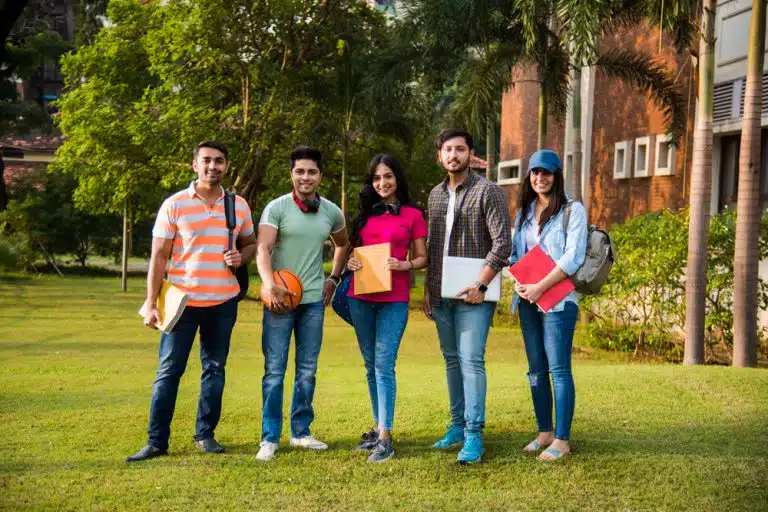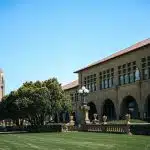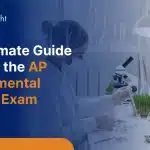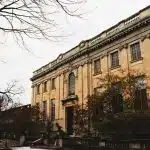If you’re a high schooler who’s all about research, the Anson L. Clark Scholars Program might just be your thing. Think hands-on research, one-on-one mentorship, and the chance to really dig into the topics that light you up.
This blog is your go-to guide for everything about the Anson L. Clark Scholars Program. We’ll cover the backstory, what it’s all about, tips for nailing your application, and those key deadlines you can’t afford to miss. If you’re trying to figure out if you’re eligible or just want to know how to make your application stand out, stick around.
- What Is the Anson L. Clark Scholars Program?
- Anson L. Clark Scholars Program Acceptance Rate
- Anson L. Clark Scholars Program Application Deadline
- Anson L. Clark Scholars Program Requirements
- How to Get into the Anson L. Clark Scholars Program
- Why Join the Anson L. Clark Scholars Program?
- Frequently Asked Questions
- Takeaways
What Is the Anson L. Clark Scholars Program?
The Anson L. Clark Scholars Program, run by Texas Tech University, is a summer research program designed for high school students. Named after Anson L. Clark—a World War I pilot, doctor, oil tycoon, and philanthropist—this 30-year-old program reflects his legacy of innovation and education. Each summer, only 12 students make the cut, so if you’re in, you know it’s a big deal.
The program runs for seven weeks. For 2025, it kicks off on June 9 and runs through July 31. During that time, you’ll take on a research project tailored to your interests, working closely with a faculty mentor who guides you every step of the way.
It’s not all lab coats and microscopes, though. The program mixes in lectures, seminars, and even field trips. And because you’ll be working alongside other scholars, you’ll constantly be swapping ideas and learning from different perspectives.
This program has a track record of shaping future leaders. Take Dr. Sheel Dodani, for example. A former Clark Scholar, she’s now a chemistry professor at UT Dallas and credits the program with helping her find her academic path.
Another cool aspect? The partnerships. Collaborating with places like UT Dallas and Texas Tech University means you’ll have access to cutting-edge labs and expert faculty.
Anson L. Clark Scholars Program Acceptance Rate
The Anson L. Clark Scholars Program is highly competitive. Each year, hundreds of high school students from all over the country send in their applications. But with only 12 spots up for grabs, the acceptance rate is painfully slim, sitting at less than 3%.
The small cohort ensures you’ll get a tailored, hands-on experience. The program’s exclusivity reflects its commitment to quality over quantity, giving you access to top-tier mentorship, cutting-edge resources, and a research experience most students can only dream about.
It’s this high bar that gives the Anson L. Clark Scholars Program its reputation as a gold standard for summer research programs.
Anson L. Clark Scholars Program Application Deadline
Mark your calendar—applications for the Anson L. Clark Scholars Program are due by February 22, 2025.
Make sure you’ve got everything in order well before the date. Double-check your documents, proofread your essays, and hit submit with time to spare. Procrastination won’t cut it here—late submissions won’t even be considered.
Notification and other key dates
You’ll know if you’re in by April 15, 2025. That’s when acceptance notifications go out, giving you just enough time to plan your summer if you’re one of the 12 scholars chosen.
Before you dive into the program, there are onboarding sessions in early June. They’ll walk you through how the program works, what’s expected, and the research protocols you’ll follow. By the time you start your project, you’ll be ready to hit the ground running.
Staying on top of these dates is key if you want to make the most of this opportunity. The Anson L. Clark Scholars Program is a serious commitment, but if you’re ready to put in the work, it could be the start of something big.
Anson L. Clark Scholars Program Requirements
If you’re thinking about applying to the Anson L. Clark Scholars Program, getting a handle on the requirements is step one. Here’s what you need to know about eligibility, required documents, and costs.
Eligibility
To qualify for the Anson L. Clark Scholars Program, you’ll need to meet a few specific criteria:
- Age. You’ve got to be at least 17 years old by the time the program starts.
- Academic standing. This program is open to two groups: rising seniors (students about to enter their final year of high school) and recent high school grads who want to participate the summer after graduation.
- Research interests. For the 2025 program, you may apply to the following research areas: Biology/Cellular & Microbiology, Cancer Biology, Chemistry, Computer Science, Electrical and Computer Engineering, History, Mechanical Engineering, and Physics.
Required documents
Here’s what they’re asking for:
- Online application. Fill out the official form.
- Essays. Respond to essay prompts that give you space to share your interests, motivations, and goals. This is your chance to make them see who you are.
- Transcripts. Upload your high school transcripts, including AP scores if you’ve got them. They don’t need to be official.
- Test scores. You’ll need to submit at least one score report—PSAT, PACT, SAT, or ACT all work. If you haven’t taken the SAT or ACT before the deadline, PSAT or PACT scores are fine.
- Recommendations. You need three recommendation forms. Two should come from teachers, while the third can be from a teacher, mentor, or someone from a volunteer organization. Instead of letters, your recommenders will fill out an online questionnaire.
- Top 5 activities. Pick your best five accomplishments—anything from academic awards to research projects to extracurriculars. If you’ve got a standout service experience, you can elaborate on it in a specific essay prompt. Just a heads-up: they won’t look at extra resumes or lists, so choose wisely.
This mix of documents lets the committee evaluate your academic background, research potential, and how well you’d fit into the program’s goals.
Program costs
Here’s where things get exciting: the Anson L. Clark Scholars Program is completely free. Tuition, room, and board? All covered.
You’ll also get a $750 tax-free stipend when you finish the program. Use it for personal expenses or save it—it’s up to you.
The only thing they don’t cover is your travel to and from Texas Tech University, so you’ll need to plan for that.
How to Get into the Anson L. Clark Scholars Program
Getting into the Anson L. Clark Scholars Program isn’t easy, but it’s not impossible either—if you know how to approach it. With everything done online, the process is pretty straightforward, but every step counts.
Here’s a practical guide to help you navigate the application process and put together something that actually stands out:
Step 1: Set up your application account.
Let’s start with the basics. Head to the application site, click “Sign Up,” and follow the prompts. Once you’ve registered, you’ll get an email to set up your password. From there, log in and get started.
As you work through the application, make sure to save your progress after each section. Nobody wants to redo work because of a glitch.
When it’s time to upload documents like transcripts or test scores, stick to PDFs. It keeps things smooth and avoids unnecessary hiccups.
Step 2: Write excellent essays.
The essays are where you make your case. The selection committee isn’t just looking for a solid GPA or test scores—they want to see what drives you. Here are the Anson L. Clark Scholar Program essay prompts:
Research interest essays
- Describe your primary research interest, being very specific. This will help with matching you to a research professor. (2,000 characters including spaces)
- Optional – Describe your secondary research interest, being very specific. (2,000 characters including spaces)
Personal essays
- Tell the Selection Committee about yourself and your reasons for applying to the Clark Scholarship Program. Please include your future goals and how becoming a Clark Scholar would contribute to achieving those goals. (2,000 characters including spaces)
- Tell us about your most fulfilling service experience. (1,500 characters including spaces)
How to write the research interest essays
For the “primary research interest” essay, go specific. Talk about what excites you and how it ties to your experiences. For instance, don’t just say you’re into biology. Say something like, “I’m fascinated by cancer biology, especially how CRISPR technology could redefine gene editing for cancer treatments.” That way, the committee knows exactly where you’d thrive in the program.
There’s also an optional “secondary research interest” essay. It’s not mandatory, but skipping it could make you look less invested. Use it to show you’re curious about other fields too—this can help match you with a mentor if your primary pick isn’t available.
How to write the personal essays
For the “about yourself” essay, tell a story. This isn’t the time for generic lines like, “I’ve always loved science.” Instead, get specific: “Analyzing DNA samples in AP Biology sparked my interest in cancer research. I want to build on that passion with hands-on mentorship in the Anson L. Clark Scholars Program.” The key is connecting your goals to what the program offers.
The “most fulfilling service experience” essay should highlight an impactful moment. Focus on something where you made a difference, like organizing a STEM camp for underrepresented students. Share the outcome—how your efforts inspired others or created change.
Quick tips for the essays
- Stay within the word limit. 2,000 characters with spaces.
- Write clearly. This isn’t a place for overcomplicated jargon.
- Proofread! Typos and grammar mistakes can undercut a strong application.
Step 3: Make your test scores count.
Standardized test scores aren’t everything, but they can definitely give you an edge. If you’re submitting SAT or ACT scores, aim for the 99th percentile:
- SAT. 1530 or higher.
- ACT. 35 or higher.
If you don’t have those scores yet, PSAT or PACT scores are fine too, but make sure they’re your best.
Retaking tests? Use study guides, take practice exams, and focus on areas where you can improve. You may also hire a private tutor. Strong scores show the committee you’ve got the academic chops to handle the program’s rigor.
Step 4: Secure strong recommendations.
For the Anson L. Clark Scholars Program, you’ll need three recommendations. Two should come from teachers who know how you work in class—people who can vouch for your academic skills and potential. The third is a bit more flexible: it can be another teacher, a research mentor, or even someone who oversaw your volunteer work.
Here’s the key: don’t wait until the last minute. Ask for recommendations at least six weeks before the deadline so your recommenders have enough time to write something thoughtful.
Be strategic about who you ask. Pick people who can really speak to your strengths, like how well you collaborate, solve problems, or think critically.
To make their job easier, give them a cheat sheet—a list of your accomplishments and details about the program. This way, they can tailor their recommendations to show why you’d be a perfect fit.
Step 5: Showcase your top 5 activities.
This is your moment to highlight the things you’ve done that actually matter. The Anson L. Clark Scholars Program gives you space to list five activities—think of this as a greatest hits album of your accomplishments. You can describe a sixth activity in your essay if it fits, but don’t feel the need to include filler just to hit a number.
Focus on what’s made the biggest impact. Did you win a science fair? Found a coding club? Organize a STEM workshop for your community?
Prioritize quality over quantity. A mix of academic, extracurricular, and community service activities works best, especially if they show off your curiosity and dedication to STEM. Make sure your list reflects who you are and how you align with the program’s goals.
Step 6: Submit on time.
The deadline is February 24, 2025, at 11:59 PM CST. Late applications won’t be considered, no matter how amazing you are.
To avoid any stress, aim to finish your application at least a week early. That gives you time to deal with any last-minute tech glitches or details you might’ve overlooked. Double-check everything—essays, documents, and forms—before hitting submit.
Why Join the Anson L. Clark Scholars Program?
From hands-on research to mentorship opportunities, this program offers a rare mix of challenge, support, and recognition. If you’re aiming to stand out in competitive college admissions, this is a move worth making.
1. Research experience
Colleges love seeing students with real research experience, especially if you’re headed into STEM.
The Anson L. Clark Scholars Program throws you into a seven-week research project guided by faculty mentors who know their stuff. You’ll be analyzing data, solving problems, and honing your ability to explain complex ideas—all skills that not only look good on paper but also prepare you for college-level work.
And since only 12 students are accepted each year, getting in already sets you apart as someone who can thrive in a high-pressure, high-reward environment.
2. Mentorships
The mentorship model here is a game-changer. When you’re paired with a faculty mentor, you’re gaining someone who can help you map out your academic and professional future. These relationships often last beyond the program and can lead to more research opportunities or even glowing recommendation letters.
Plus, you’ll be working alongside a small but diverse group of peers, giving you a built-in network of future innovators to collaborate with and learn from.
3. Resume boost
Previous Clark Scholars often credit their time in the program as a key factor in getting into top-tier universities.
Let’s be real: listing the Anson L. Clark Scholars Program on your college resume is like having a stamp of excellence. With its acceptance rate hovering below 3%, being part of this program tells admissions committees you can handle intense challenges and excel in a competitive setting.
4. Financial incentives
Most programs this prestigious come with a hefty price tag, but the Anson L. Clark Scholars Program is entirely free. On top of that, you’ll walk away with a $750 stipend once you complete the program.
Frequently Asked Questions
1. What is the acceptance rate for the Anson L. Clark Scholars Program?
The acceptance rate is brutal—less than 3%. Out of hundreds of hopefuls, only 12 students make it in each year. It’s highly competitive, which is part of what makes the program so prestigious.
2. Can international students apply to the Anson L. Clark Scholars Program?
Yes, international students can apply! The Anson L. Clark Scholars Program is open to both domestic and international high school students who are ready to take on college-level research.
3. How much does it cost to join the Anson L. Clark Scholars Program?
Nothing. Joining the Anson L. Clark Scholars Program won’t cost you a dime. Room and board are fully covered, and when you finish the program, you’ll walk away with a $750 stipend.
4. What kind of research projects are accepted in the Anson L. Clark Scholars Program?
For the 2025 cohort, the accepted research fields are the following: Biology/Cellular & Microbiology, Cancer Biology, Chemistry, Computer Science, Electrical and Computer Engineering, History, Mechanical Engineering, and Physics. Your research project will be tailored to your interests, and you’ll be matched with a faculty mentor who specializes in that area.
5. When is the application deadline for the Anson L. Clark Scholars Program?
The deadline for the 2025 program is February 24, 2025, at 11:59 PM CST. Make sure everything is submitted on time—late applications won’t be considered.
Takeaways
The Anson L. Clark Scholars Program is a rare and highly competitive chance for high school students to dive into serious research. Here are the five big takeaways to keep in mind:
- With an acceptance rate sitting at less than 3%, the Anson L. Clark Scholars Program isn’t easy to get into.
- For seven intense weeks, you’ll work on real research projects in fields ranging from biology to engineering, guided by expert faculty mentors.
- The Anson L. Clark Scholars Program is fully funded. Plus, you walk away with a $750 stipend when it’s done.
- Getting in means nailing the basics: thoughtful essays, strong recommendations, and test scores that show you’re ready for the challenge.
- If you’re serious about standing out, it might be worth talking to a college admissions consultant. They can help you fine-tune your application and give you the edge you need to become a Clark Scholar.

Eric Eng
About the author
Eric Eng the Founder and CEO of AdmissionSight, graduated with a BA from Princeton University and has one of the highest track records in the industry of placing students into Ivy League schools and top 10 universities. He has been featured on the US News & World Report for his insights on college admissions.





















